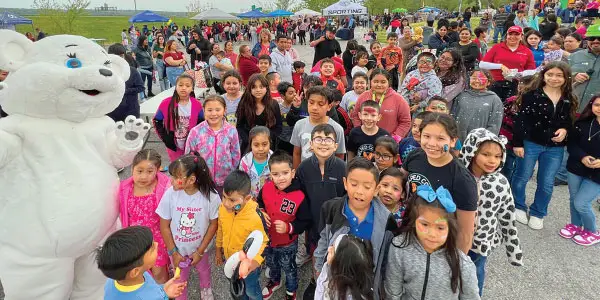
Polaris, una organización no lucrativa que está trabajando para erradicar la esclavitud moderna, recientemente publicó un reporte difundiendo el conocimiento de una economía sexual clandestina que está operando en las cantinas y bares en Estados Unidos, y está explotando a las mujeres de Latinoamérica.
Titulado “More Than Drinks for Sale: Exposing Sex Trafficking in Cantinas and Bars in the U.S.,” (Más que vender bebidas: la exposición del tráfico sexual en cantinas y bares en Estados Unidos), el reporte detalla la manera en que los prostíbulos operan en gran medida sin supervisión haciéndose pasar como bares o clubes nocturnos tradicionales. Mientras tanto, sus víctimas están atrapadas en una industria caracterizada por una violencia y explotación inimaginables.
“Diariamente en Estados Unidos, mujeres jóvenes y niñas son prisioneras de redes criminales que venden sexo en cantinas y bares aquí mismo en nuestras puertas”, dijo el director de Polaris, Bradley Myles. “Si queremos detener la persecución de latinas en estos lugares sumamente abusivos, tenemos que cambiar la ecuación para los traficantes alterando el modelo del negocio y convirtiéndolo en un crimen de alto riesgo y con bajas ganancias”.
“More than Drinks for Sale” (Más que vender bebidas) se basa en información obtenida de interacciones normales de Polaris con personas que contactan la Línea Nacional del Centro de Recursos del Tráfico Humano y BeFree Textline (Linea de textos sé libre). Sus resultados incluyeron lo siguiente:
*De las posibles víctimas, el 96 por ciento eran mujeres, generalmente de México o Centroamérica -y el 63 por ciento eran menores de edad.
*Casi un tercio de los traficantes eran mujeres y el 67 por ciento eran hombres.
*De los traficantes, el 70 por ciento eran de descendencia latinoamericana, y por lo menos el 35 por ciento de ellos eran ciudadanos de Estados Unidos.
*El 62 por ciento de las víctimas reportaron haber estado confinadas o aisladas físicamente de alguna manera.
*De las víctimas, el 51 por ciento reportaron abuso económico, incluyendo robo de salario o imponiéndoles deudas inalcanzables de pagar.
*De las víctimas, el 34 por ciento fueron reclutadas mediante tácticas relacionadas con contrabando.
*Por lo menos el 29 por ciento recibieron falsas ofertas de trabajo, y solamente se enteraron de la naturaleza verdadera del trabajo a su llegada.
*De las víctimas, el 31 por ciento reportaron clientes sexuales comerciales como un punto principal de acceso para ayuda.
*El 14 por ciento interactuaron con oficiales de inmigración o de la policía, sin embargo, en la mayoría de los casos el contacto no condujo a que fueran identificadas como víctimas.
*De las víctimas, el 19 por ciento reportaron tener acceso a servicios de atención médica. Se piensa que el número actual sea mayor.
_______________________________________________________________________________________________________________
Sex trafficking of Latinas reportedly flourishing in U.S. cantinas, bars
Courtesy of the Polaris Project
Polaris, a non-profit organization that’s working to eradicate modern slavery, recently released a report shedding light on an underground sex economy that’s operating out of U.S.-based cantinas and bars, and is exploiting females from Latin America.
Titled “More Than Drinks for Sale: Exposing Sex Trafficking in Cantinas and Bars in the U.S.,” the report details how commercial-front brothels operate largely unchecked by posing as traditional bars or nightclubs. Meanwhile, their victims are trapped in an industry characterized by unimaginable violence and exploitation.
“Every day in the U.S., young women and girls are held prisoner by criminal networks that sell sex in cantinas and bars right in our backyards,” Polaris CEO Bradley Myles said. “If we want to stop the victimization of … (Latinas) in these highly abusive venues, we have to change the equation for traffickers by disrupting the business model and making the crime high-risk and low-profit.”
“More than Drinks for Sale” is based on data gleaned from Polaris’ normal interactions with individuals contacting the National Human Trafficking Resource Center Hotline and BeFree Textline. Its findings included the following:
*Of the potential victims, 96 percent were female, typically from Mexico or Central America – and 63 percent were minors.
*Nearly a third of the traffickers were women and 67 percent were men.
*Of the traffickers, 70 percent were of Latin American descent, and at least 35 percent of them were U.S. citizens.
*Sixty-two percent of the victims reported having been confined or physically isolated in some way.
*Of the victims, 51 percent reported economic abuse, including wage theft or the imposition of unattainable debts.
*Of the victims, 34 percent were recruited through smuggling-related tactics.
*At least 29 percent received fake job offers, only learning the real nature of the work upon arrival.
*Of the victims, 31 percent reported commercial sex clients as a primary point of access to help.
*Fourteen percent interacted with law enforcement or immigration officials; however, in most cases, the contact didn’t lead to their identification as victims.
*Of the victims, 19 percent reported accessing health care services. The actual figure is believed to be higher.









